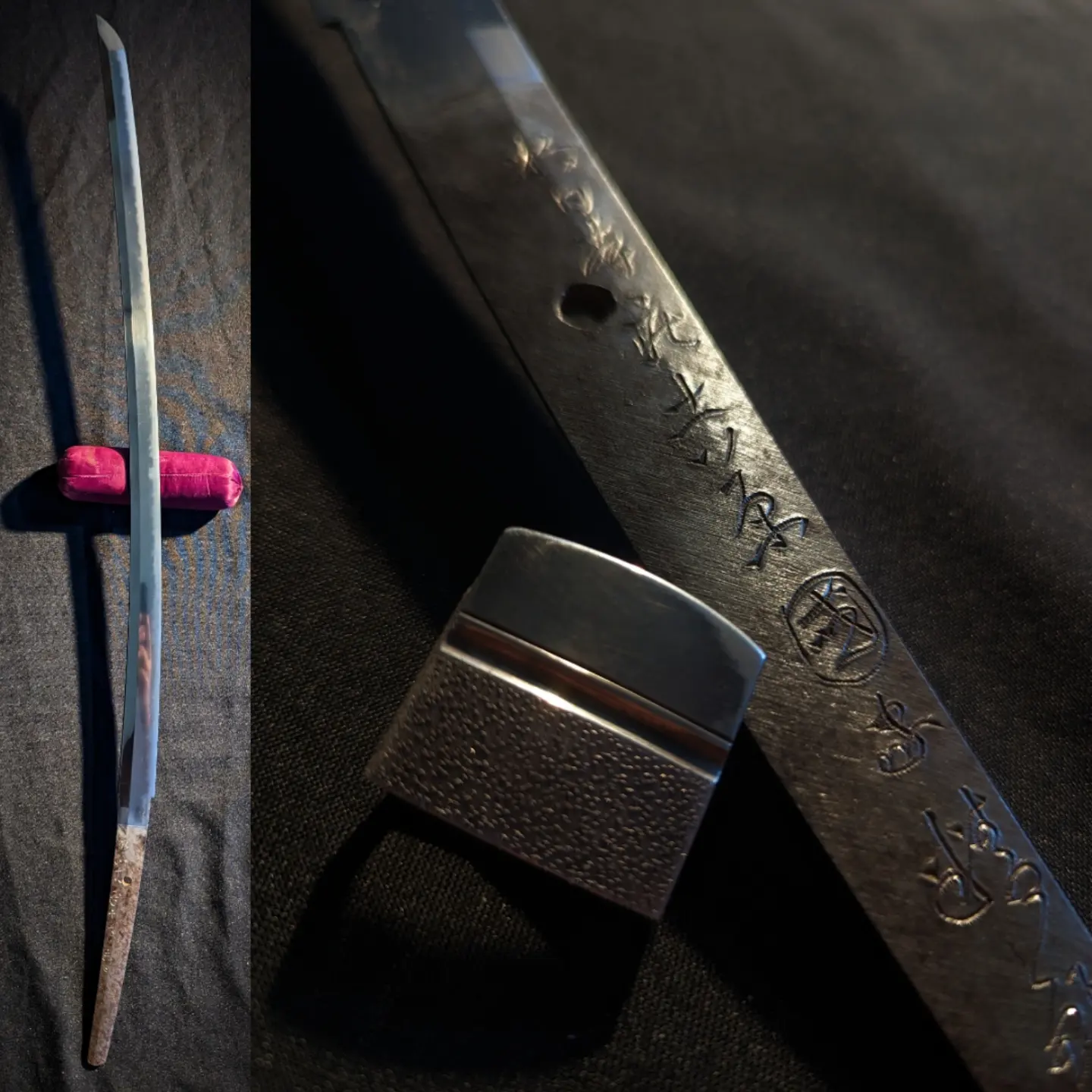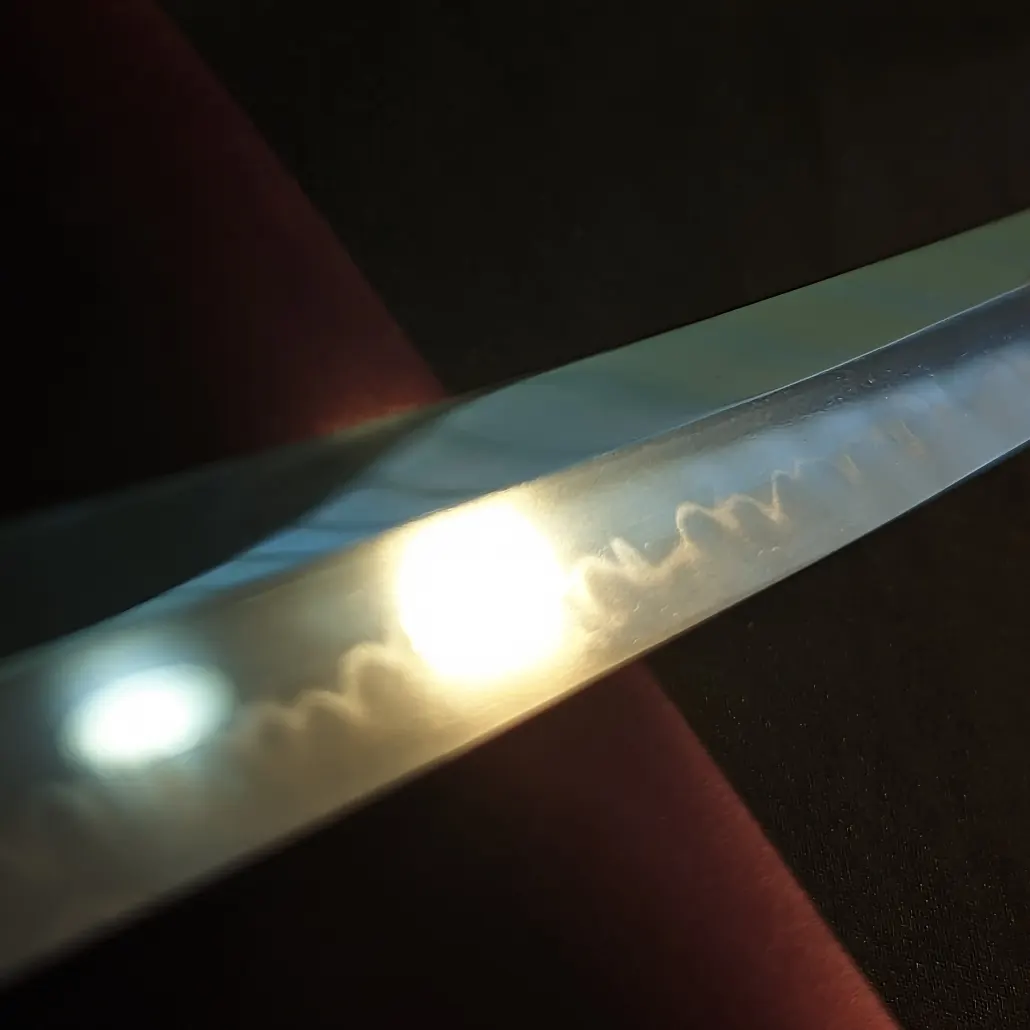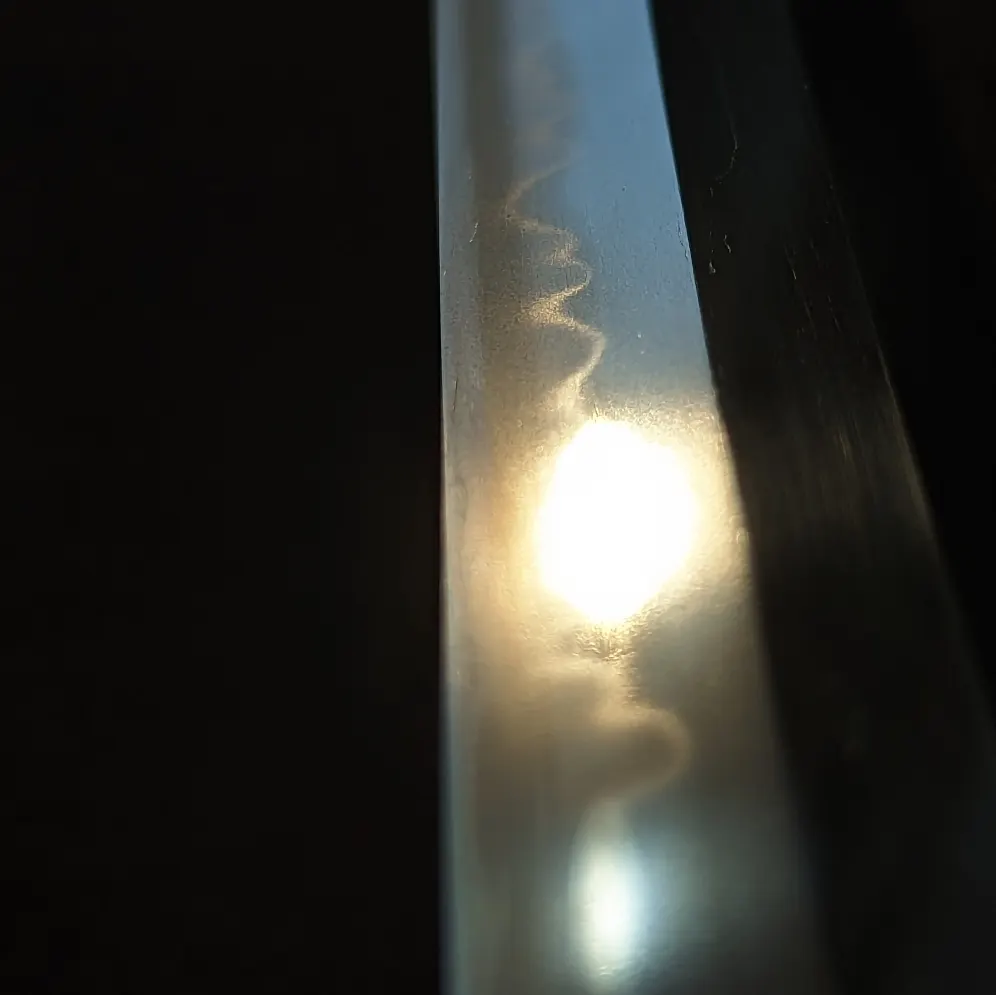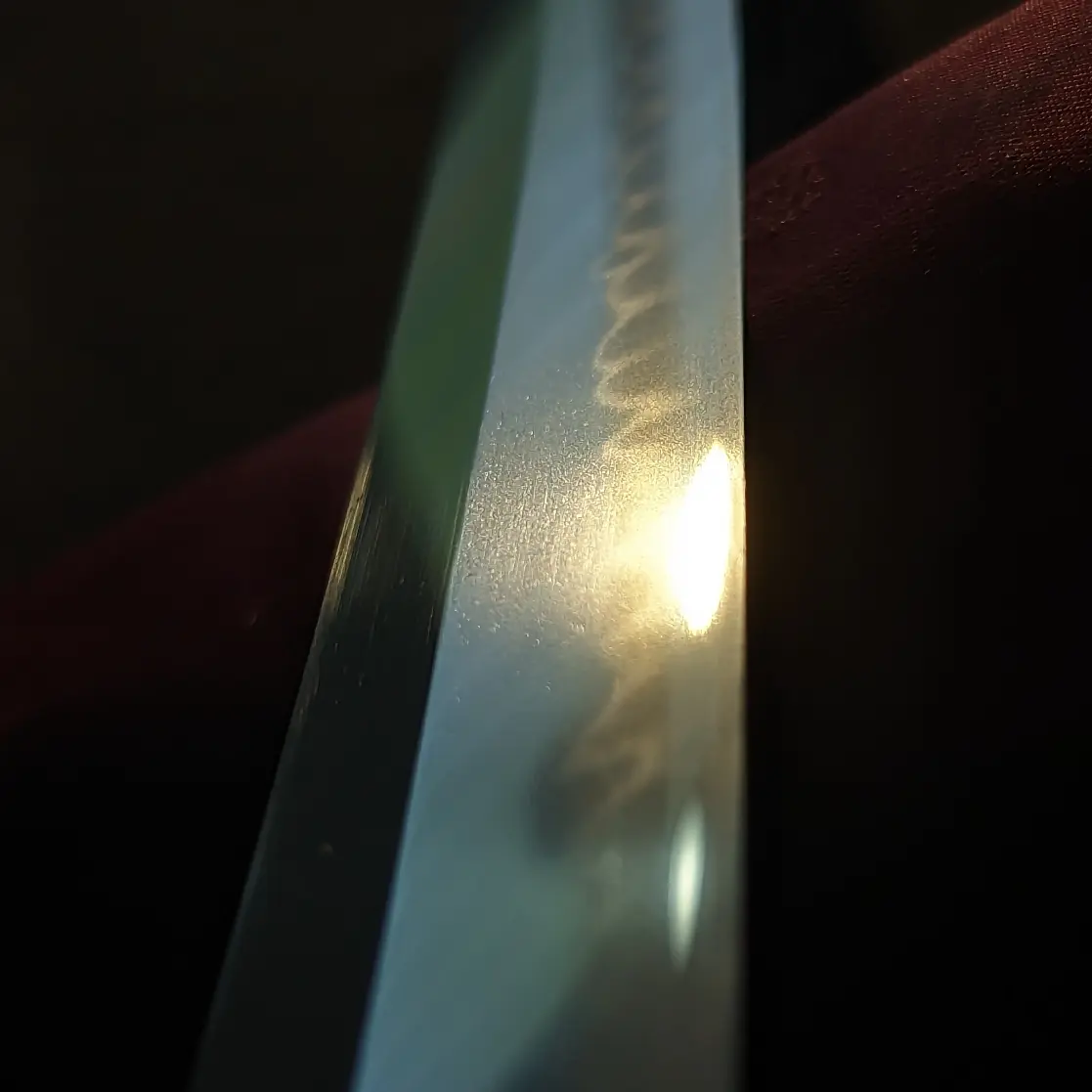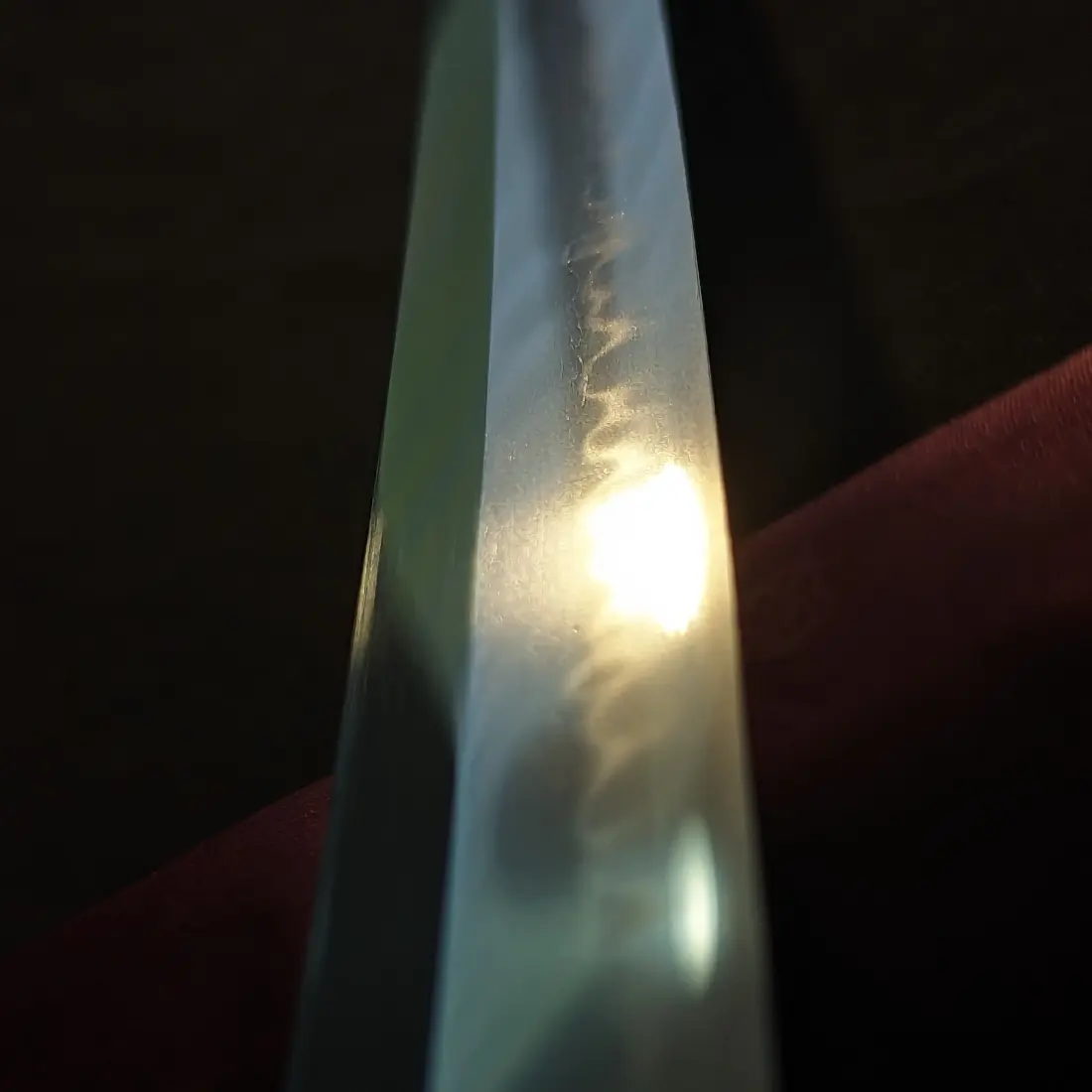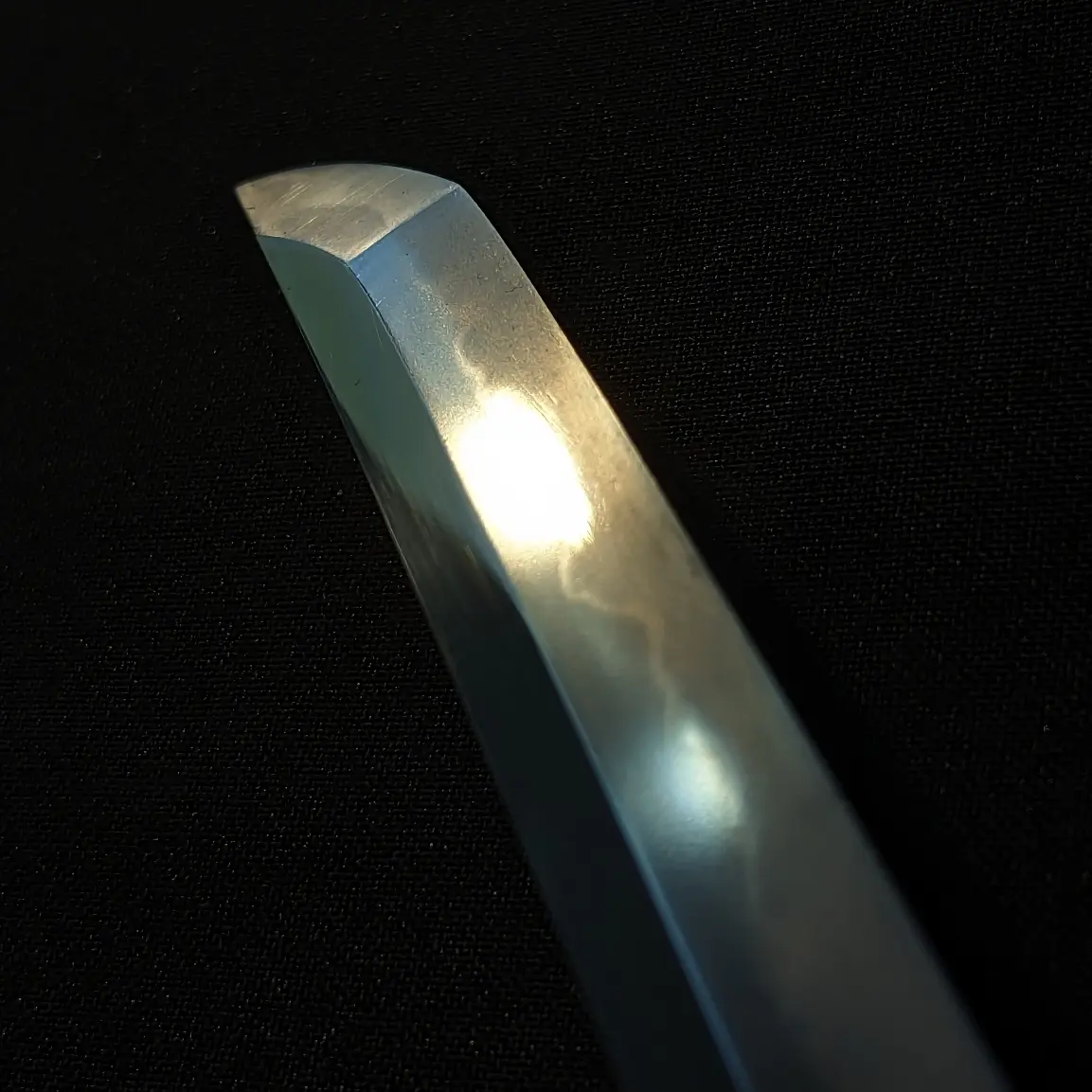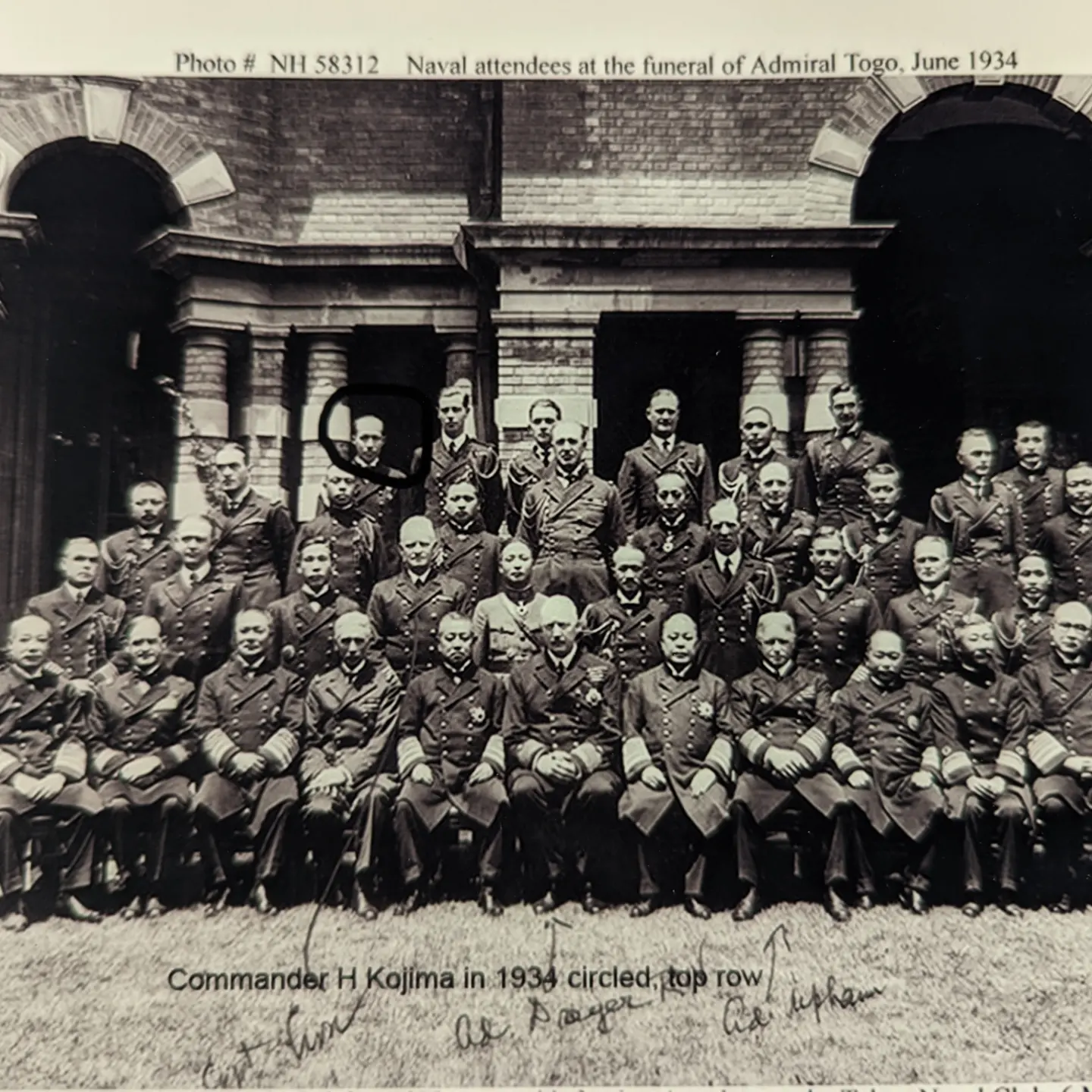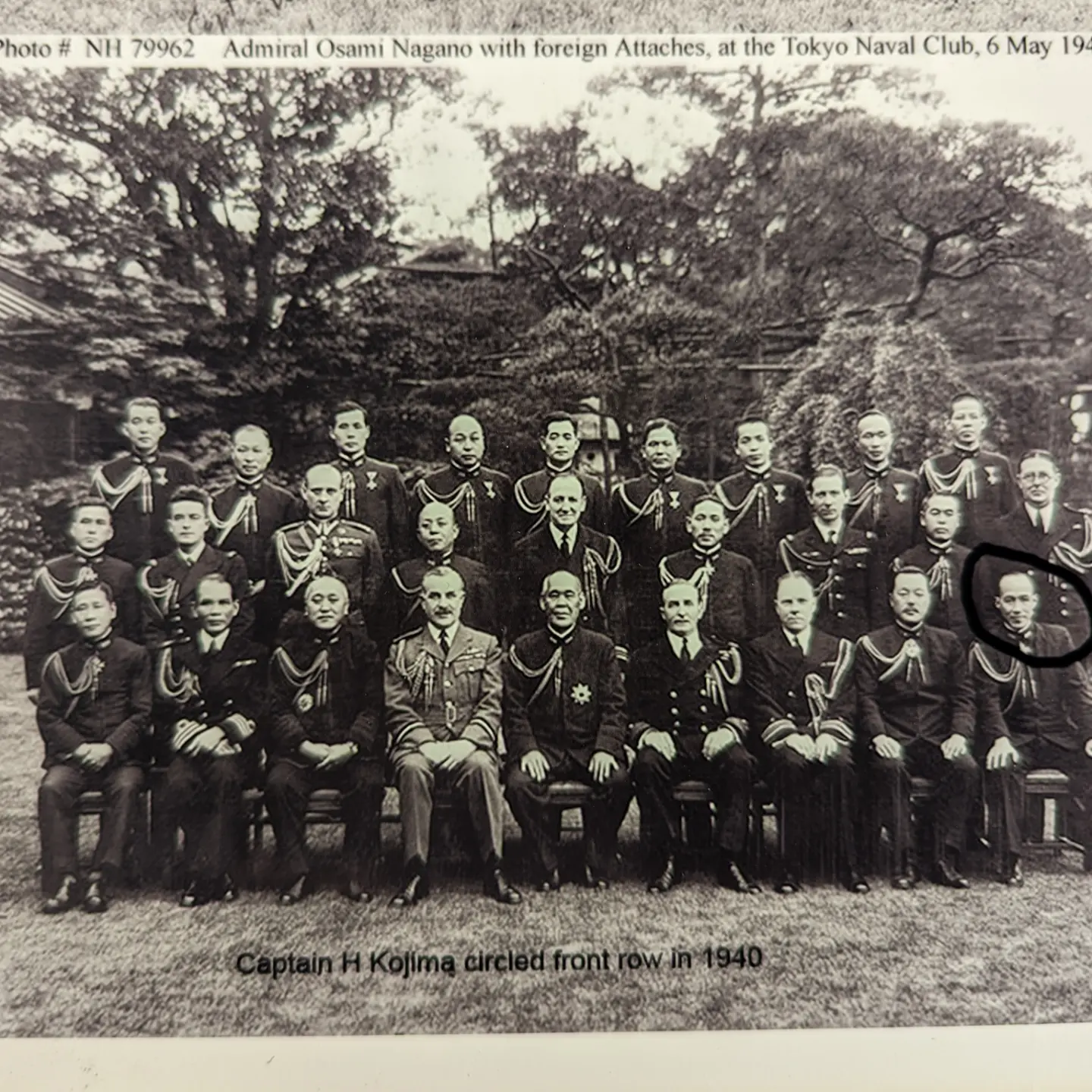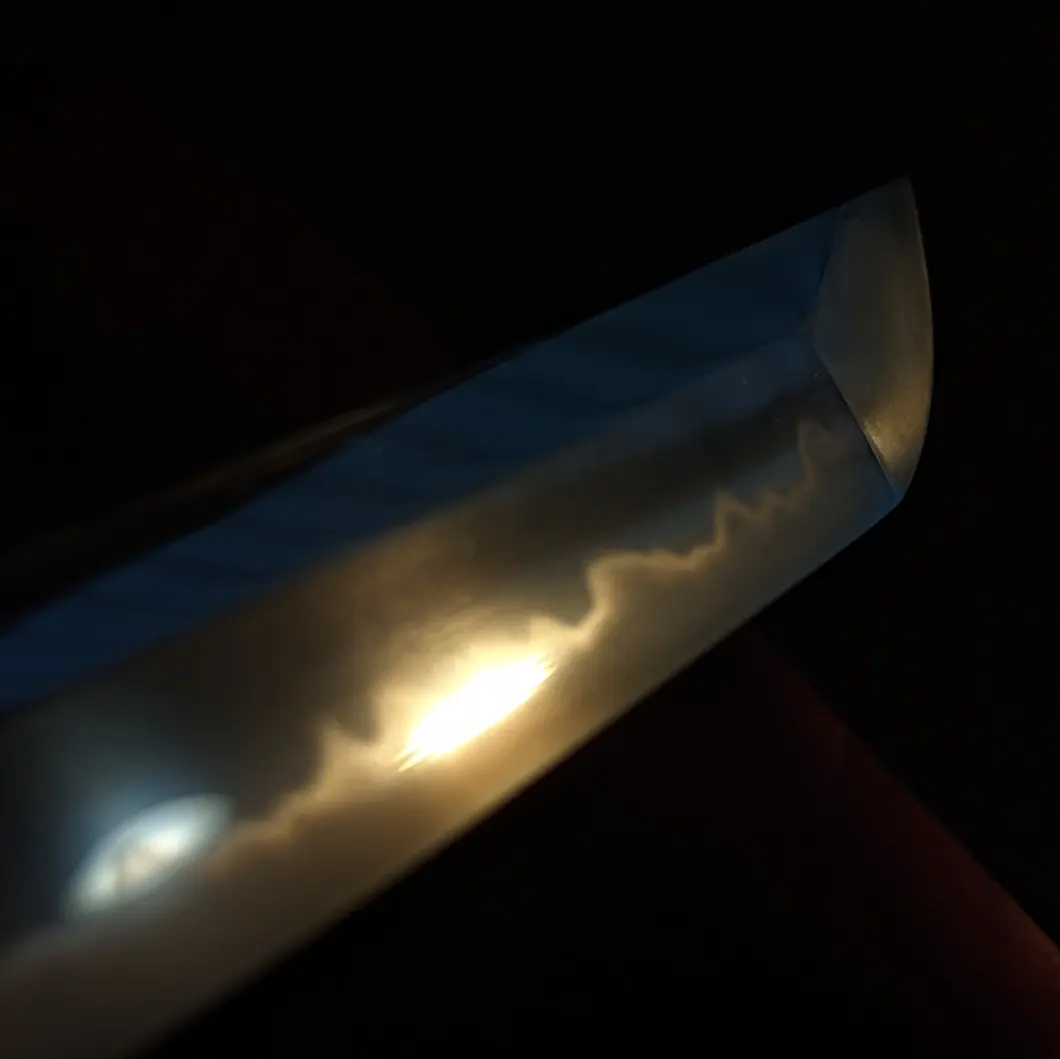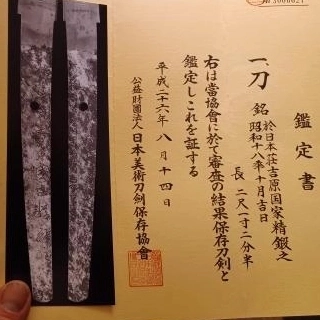Yoshihara Kuniie
Nagasa: 64.25cm
Moto-haba: 2.86cm
Saki-haba: 2.06cm
Kasane: 6.4mm
Sori: 1.9cm
Born on July 26, 1894 at the foot of Mt. Tsukuka in Ibaraki prefecture, Kuniie was the son of a seventh generation hard edge toolmaker.
After graduating in the first class from the Denshujo, Kuniie quickly cultivated a good reputation. As his skills were in great demand, he soon became an instructor at various institutions. In 1937, he became an auxiliary teacher of the Kyushu University Kingakubu Nihonto Kenkyujo.
The following year, he opened his own workshop, the Nihon So Tanrenjo, at his residence in Setagaya, Tokyo. Around the early 1940’s Kuniie was working part-time in many places. He was also a contract smith for the Japanese Imperial army (Rikugun Jumei Tosho).Following in his mentor’s footsteps, he became an instructor smith at the forge on the grounds of Toyama Mitsuru’s estate (the Tokiwamatsu Tanren Kenkyu Jo in Shibuya, Tokyo) after Shigetsugu had moved on to another venue.
In 1941, Kuniie was appointed by Kurihara as chief instructor of the newly formed Nihonto Gakuin (Japanese Sword Institute) at Sagamihara-cho, Zama (Sobudai), Kanagawa Prefecture. As part of the opening day ceremonies he gave a demonstration of tameshiigiri (cutting test).
By 1943 Kuniie had gone on to become a swordsmith instructor for the Japanese Imperial Army at the Tokyo Dai Ichi Rikugun Zoheisho, the military arsenal in Akabane, Tokyo. Here he chose to use yet another art name—Nobutake. His job was to train army smiths and inspect and acquire swords made in the kanto region (Tokyo and surrounding areas). The swords he made there are usually inscribed ‘Tokyo Dai Ichi Rikugun Zoheisho Yoshihara Nobutake’

